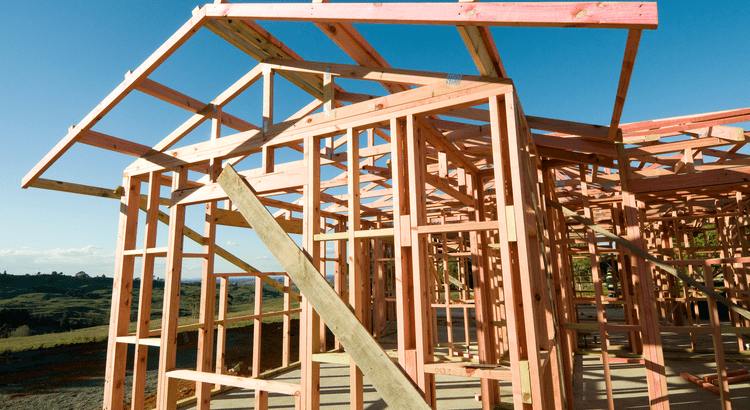Common Real Estate Myths Debunked

The real estate market is filled with myths and misconceptions that can lead to confusion for buyers and sellers alike. These myths often stem from outdated advice, generalized statements, or misunderstandings about how the market works. In this blog, we’ll tackle some of the most common real estate myths and provide clarity on what you can truly expect when buying or selling a home.
Myth 1: You Should Always Price Your Home Higher Than Its Market Value
The Reality
Pricing your home above market value might seem like a smart way to leave room for negotiation, but it can actually backfire. Overpriced homes often deter potential buyers, leading to longer time on the market and eventual price reductions. This can create the perception that something is wrong with the property.
The Takeaway
Work with a real estate agent to set a competitive and realistic price. A well-priced home is more likely to attract multiple offers, which can drive the final sale price higher.
Myth 2: You Don’t Need an Agent to Buy or Sell a Home
The Reality
While it’s possible to buy or sell a home without an agent, doing so can be risky and complicated. Real estate transactions involve legal contracts, negotiations, and a thorough understanding of the market. Without professional guidance, you might overlook critical details or make costly mistakes.
The Takeaway
A real estate agent brings expertise, market knowledge, and negotiation skills to the table, ensuring a smoother and more profitable transaction.
Myth 3: Spring Is the Only Good Time to Sell a Home
The Reality
While spring is traditionally a busy season for real estate, homes sell year-round. Factors like local market conditions, interest rates, and personal circumstances often play a more significant role in determining the best time to sell.
The Takeaway
Instead of waiting for spring, focus on preparing your home and working with an agent to time your sale based on your local market dynamics.
Myth 4: You Need a 20% Down Payment to Buy a Home
The Reality
The 20% down payment rule is outdated. Many loan programs allow buyers to purchase a home with as little as 3% to 5% down. Additionally, there are assistance programs available for first-time buyers and those with limited funds.
The Takeaway
Speak with a mortgage professional to explore your financing options. You might be closer to homeownership than you think.
Myth 5: Online Home Value Estimators Are Always Accurate
The Reality
Online tools like Zillow’s Zestimate can provide a general idea of your home’s value, but they often rely on incomplete or outdated data. These estimates don’t account for unique features, recent upgrades, or local market trends.
The Takeaway
For an accurate valuation, consult a real estate agent who can perform a Comparative Market Analysis (CMA) tailored to your property.
Myth 6: Selling “As-Is” Means You Don’t Have to Make Repairs
The Reality
Selling a home “as-is” simply means the seller won’t make any repairs before closing. However, buyers can still request an inspection and may negotiate for a lower price based on the home’s condition.
The Takeaway
Even when selling as-is, addressing minor repairs and cleaning can make your home more appealing and help you achieve a better price.
Myth 7: Open Houses Are the Best Way to Sell a Home
The Reality
While open houses can generate interest, they’re not always the most effective way to sell a home. Serious buyers often schedule private showings, and online marketing has become a more powerful tool for reaching potential buyers.
The Takeaway
A comprehensive marketing strategy that includes professional photos, online listings, and targeted advertising is more likely to yield results than relying solely on open houses.
Myth 8: Renovating Before Selling Guarantees a Higher Price
The Reality
Not all renovations yield a high return on investment. Some improvements might appeal to certain buyers but not others. Over-improving your home can also price it out of the market.
The Takeaway
Focus on cost-effective upgrades that enhance your home’s appeal, such as fresh paint, updated fixtures, and improved landscaping. Consult your agent to determine which renovations are worth the investment.
Myth 9: The Highest Offer Is Always the Best Offer
The Reality
A high offer might come with contingencies or financing issues that could delay or derail the transaction. A slightly lower cash offer with fewer contingencies might be a better choice.
The Takeaway
Evaluate all aspects of an offer, including contingencies, financing, and closing timelines, to make the best decision for your situation.
Myth 10: A Home’s Listed Price Is Non-Negotiable
The Reality
Most sellers expect some negotiation. While a well-priced home might sell close to its asking price, there’s often room for buyers to negotiate, especially if the home has been on the market for a while.
The Takeaway
Don’t hesitate to make an offer below the asking price, but be prepared to justify it with market data and comparable sales.
Myth 11: You Should Avoid Buying in a Seller’s Market
The Reality
While buying in a seller’s market can be challenging, it’s not impossible. Working with an experienced agent and being prepared to act quickly can help you secure a home even in competitive conditions.
The Takeaway
Don’t let market conditions deter you. Focus on your long-term goals and work with a knowledgeable agent to navigate the process.
Myth 12: New Homes Don’t Need Inspections
The Reality
Even new construction homes can have issues, from plumbing and electrical problems to structural defects. Skipping an inspection could lead to costly surprises down the road.
The Takeaway
Always invest in a professional home inspection, regardless of the property’s age or condition.
Myth 13: You Should Wait for the Perfect Home
The Reality
Holding out for a “perfect” home can lead to missed opportunities. No home is entirely flawless, and minor imperfections can often be addressed after purchase.
The Takeaway
Focus on finding a home that meets your most important needs and has potential for improvement.
Myth 14: You Can’t Buy a Home With Bad Credit
The Reality
While a good credit score makes the homebuying process easier, buyers with lower scores still have options. FHA loans and other programs are designed to help those with less-than-perfect credit.
The Takeaway
Work on improving your credit score, but don’t assume homeownership is out of reach. Speak with a mortgage professional to explore your options.
Myth 15: Real Estate Agents Are Too Expensive
The Reality
While agents earn a commission, their expertise can save you money by helping you avoid costly mistakes, negotiate better terms, and sell your home faster.
The Takeaway
The value an agent provides often outweighs the cost of their commission. Consider their services an investment in your success.
Conclusion
Real estate myths can cloud your judgment and lead to poor decisions. By understanding the realities behind these misconceptions, you can approach buying or selling a home with confidence. Whether you’re navigating the market for the first time or you’re a seasoned homeowner, working with a knowledgeable real estate agent and staying informed are key to a successful transaction. Remember, the more you know, the better equipped you’ll be to make decisions that align with your goals.
Categories
Recent Posts











